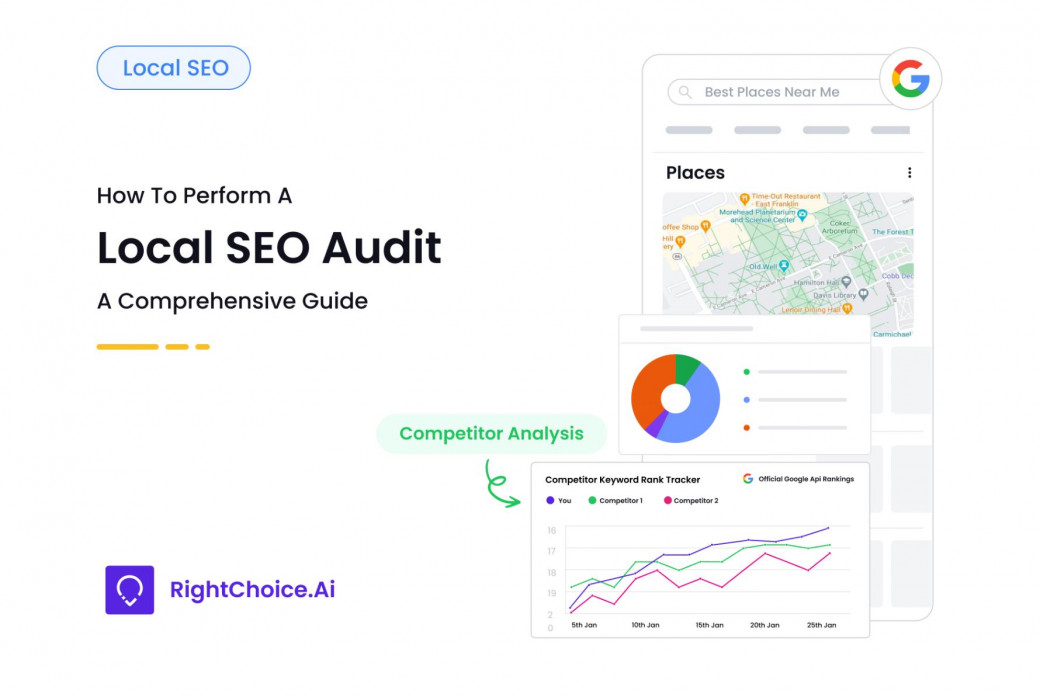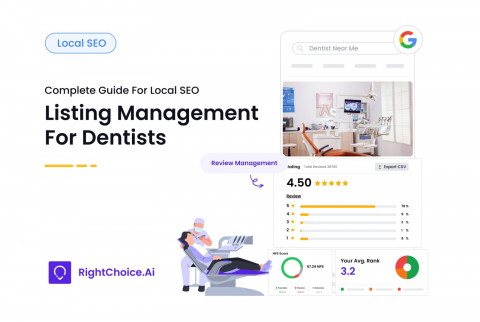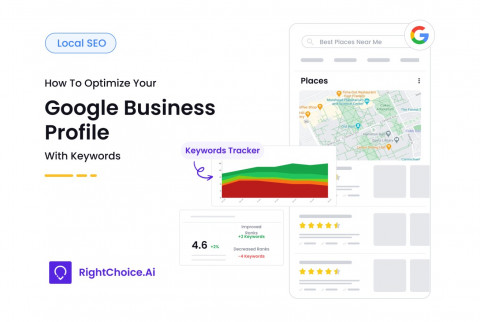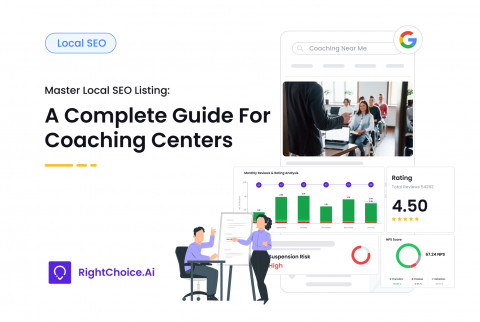How well is your business performing in local search results? If you’re unsure, it’s time to consider a local SEO audit. A thorough SEO audit can reveal where your website shines and where it may need improvement. It helps you to optimize for organic search traffic and attract more local customers. In today’s competitive digital landscape, ensuring your business appears prominently in local search results is essential for growth.
A local SEO audit systematically examines your online presence, from keyword relevance to on-page SEO elements, link-building strategy, and competitor analysis.
Let’s dive into a step-by-step SEO process to perform a local SEO audit that will help ensure your business stands out in local search results.
Step 1: Conducting Keyword Research
The first step in your local SEO audit is to identify keywords that potential customers are using search engines. Different search terms can signal customers’ intent, and understanding this can refine your approach to search optimization. Tools like RightChoiceAI offer excellent resources to identify both broad and niche keywords. It ensures that your website is optimized to reach users at different stages of their purchasing journey.
Consider the keywords that capture customer searches at each stage. For instance, a search for “Where can I find [product] near me?” is a valuable local SEO opportunity. SEO tools like Ahrefs and Keyword Finder can help generate an expanded keyword list, incorporating both short and long-tail keywords for targeted search optimization.
Step 2: Website Audit
Next, examine your website’s structure and content through a website SEO checker to determine how well your site meets current SEO standards. Conducting a website audit can reveal areas that may be hindering your organic search traffic. Key areas include:
- Page Optimization: Ensure that every page on your site includes relevant and unique keywords in titles, headings, meta descriptions, and URLs
- Featured Snippets: Featured snippets highlight specific content in Google’s search results, boosting local SEO by displaying your content at the top. Aim to optimize for snippets by publishing relevant content and ensuring that critical business information is accessible on your website.
- Internal Linking: Build internal links across your website to boost site navigation and improve search engine crawlability. By using an SEO site tester, you can verify that your site links are active and point to relevant pages.
- Duplicate Content: Search engines prioritize original content, so check for and eliminate duplicate pages or add canonical tags to avoid penalties.
Step 3: Optimizing Your Google My Business (GMB) Profile
An up-to-date Google My Business (GMB login) profile can significantly increase your local visibility, enhancing your online reputation management. To optimize your GMB everywhere profile, make sure that details such as your business hours, services, and contact information are accurate.
Regularly monitor your GMB insights to understand your profile’s performance and where improvements can be made. Updating your business details signals to search engines that your business is reliable and responsive, improving your organic search traffic.
Step 4: Local Business Citation Analysis
A consistent presence in local directories and free company listing sites bolsters your credibility. It helps in boosting your local search engine optimization. Local citations are mentions of your business across the internet, which typically include your business name, address, and phone number (NAP). Ensure that your information is consistent across all platforms, as discrepancies can harm your rankings.
Audit your citations on sites such as Yelp and Yellow Pages to confirm that your information is correct and up-to-date. Inaccurate citations may impact your online reputation and reduce your business’s visibility on search engines.
Step 5: Review Customer Feedback
Customer reviews play a crucial role in building trust and achieving organic search traffic. Positive reviews contribute to online reputation management and are an important ranking factor for local SEO. Studies indicate that the majority of customers rely on reviews to make purchase decisions, highlighting the significance of maintaining a positive reputation.
Encourage satisfied customers to leave feedback and respond to both positive and negative reviews. Engaging with customer reviews on platforms like GMB or Yelp demonstrates that your business values feedback, improving online reputation and contributing to your SEO success.
Step 6: Use Analytics for Performance Evaluation
Analytics tools such as Google Analytics allow you to track and measure your site’s performance, providing insights into your most visited pages, organic search traffic, and customer journey patterns. Regularly analyzing your site’s performance can help you understand which pages are engaging customers and where improvements are needed.
When using Google Analytics or similar SEO check tools, focus on these key areas:
- Top-visited pages: Verify if these pages are prominently displayed and optimized.
- Path to purchase: Review how customers navigate through your site to make purchases.
- Backlinks: Look for opportunities to gain backlinks from reputable websites, as these are essential for search optimization and can improve your website’s authority.
For optimal results, consider using SEO optimization tools to analyze performance and adjust your SEO strategy as needed. Backlinks from credible sources are valuable assets, helping your site rank higher in search results and increasing organic search traffic.
Step 7: Competitor Analysis
A comprehensive SEO audit includes an analysis of your competitors’ strategies. By reviewing the top competitors for your target keywords, you can gain insights into their SEO and marketing tactics and identify areas to enhance your own strategy.
Use SEO tools such as Rightchoice.AI to assess your competitors’ rankings, keywords, backlinks, and overall SEO health. Examine their GMB profiles, reviews, and social media activities to understand their approach to local search engine optimization.
Recommended Local SEO Audit Tools
Conducting a local SEO audit can be simplified using various SEO optimisation tools that streamline the process, allowing you to focus on strategic adjustments.
- RightChoiceAITools: RightChoice provides actionable SEO recommendations, topic suggestions, and monthly search data insights. This integrated tool enables you to build blog clusters around core topics, strengthening authority and improving search visibility.
- Google My Business: With GMB, you can compare your business with competitors, monitor customer reviews, and engage with customers through appointment bookings.
- Google Analytics: This tool is essential for tracking visitor behaviour, organic search traffic, bounce rates, and other metrics. Insights from Google Analytics allow you to make data-driven improvements to your website.
Putting It All Together
Performing a local SEO audit is vital for your business in local search where improvements can be made. Following this SEO audit checklist will provide a clear roadmap for optimizing your website for local search. It engages your audience, and drives more traffic to your business. By enhancing your search optimization efforts and addressing any issues discovered during the audit, RightChoice.AI can strengthen your online presence, improve your organic search traffic, and deliver better customer experiences.







